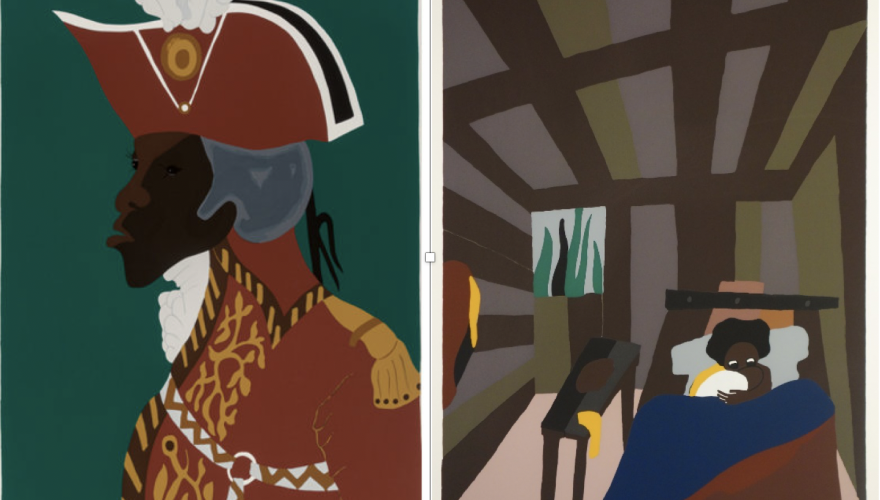Activity Guide by Kate Kwasneski ’21
Intern, Grinnell College Museum of Art
Learn
Toussaint Louverture was the first president of Haiti. Before he was in this position, he led a successful slave revolt against the French. In 1791, enslaved people on Haiti (then called Saint-Domingue) rose up against their enslavers and formed an alliance with Spain. This led to a revolution that lasted until 1804, when Haiti declared its independence. Because of this revolution, Haiti was the first free Black republic in modern history.
Toussaint L’Ouverture joined the Haitian Revolution and was a doctor to the wounded soldiers. He quickly became a leader in the Haitian army and worked his way up to general, helped Haiti declare independence from France, and was president until he was captured by the French. Haiti won independence, and the Black people who had been enslaved became free citizens. L’Ouverture is still celebrated for his role in creating the country of Haiti.
In 1938, Jacob Lawrence set out to tell Toussaint L’Ouverture’s story through art. Jacob Lawrence was an artist in the Harlem Renaissance. He had a style known for its flat shapes and bright colors. He said his style came from the colors he saw around him in Harlem more than from any other influence. He often used Black history as a subject; he told the stories of many historical figures and events over his career. His artwork telling the story of Toussaint L’Ouverture is some of his most well-known. His original series was 41 paintings done in 1938, in the 1980s and 1990s he turned 15 of them into prints. GCMoA has copies of 13 of these prints. If you would like to learn more about these prints, listen to Professor Fredo Rivera discuss them. Additionally, there is a book about Toussaint L’Ouverture called Toussaint L’Ouverture: The Fight for Haiti’s Freedom by Walter Dean Myers and illustrated by Jacob Lawrence’s paintings.
Look
Look at these prints. Think about how they use flat blocks of color to make an image. What colors do you see? Are they bright or dull? What emotions do these prints make you feel?
Think
Also think about what you can learn about Toussaint L’Ouverture’s life, and his work in the Haitian military, from these prints. Do they tell a story?
Create
Jacob Lawrence used his drawings of Toussaint L’Ouverture to tell the story of his life. Can you tell a story in drawings? Tell the story of a person in a series of drawings. Try to include at least three, so that your story has a beginning, a middle, and an end. You can include as many as you want! It might take between three and seven to tell a story well. You can make these drawings into a portfolio!
You could start by picking a person. Do you want to tell the story of someone from history or someone from your own life? Think about the details from the story that you would like to include. Try to include a lot of them. Work for quality and not quickness!
Jacob Lawrence used big blocks of flat color in his work. If you wanted to try his style, you could use markers, paints, or make a collage out of cut paper.
Write
Tell the story of your drawings. You can include this written version in your portfolio! Think about whether it is important to use the same details or different ones when writing and drawing the same story. Toussaint L’Ouverture had beautiful handwriting. Take a look at an example! Can you make your handwriting decorative or fancy?


